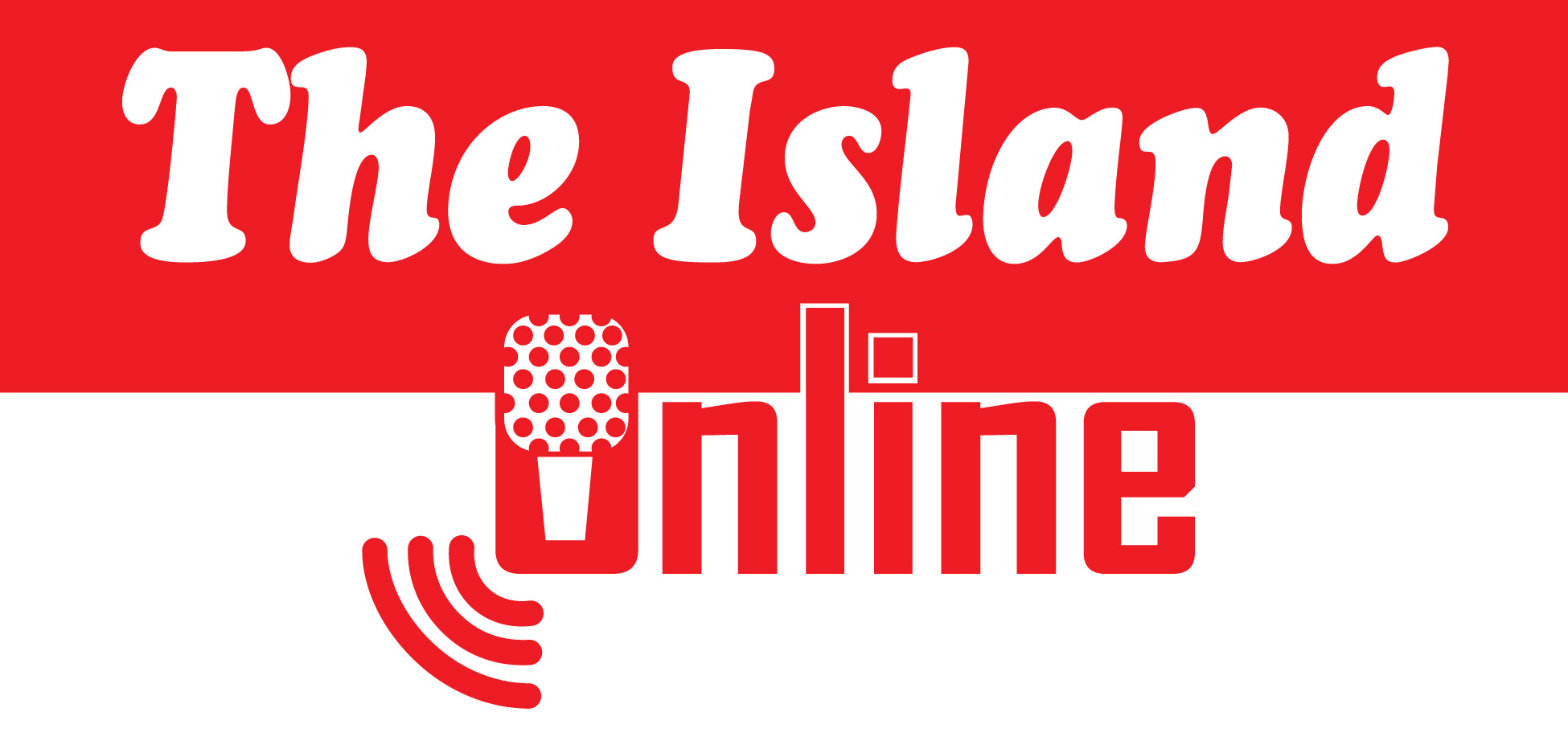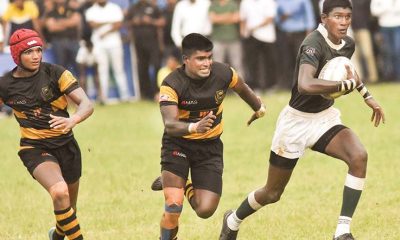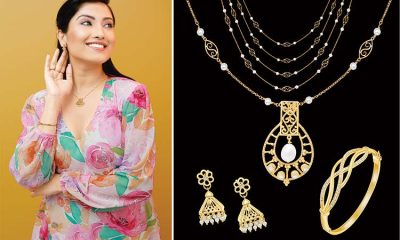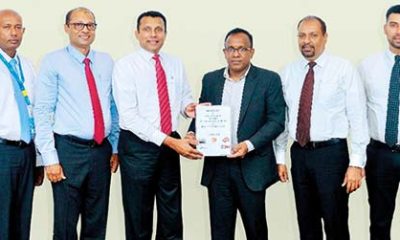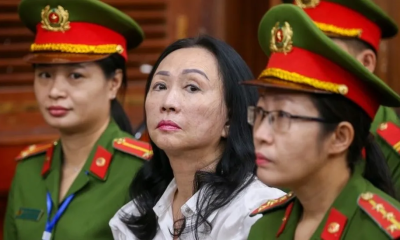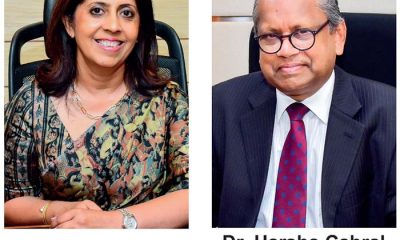Features
Crisis in Sri Lanka: Is the endgame in sight?

By Indrawansa de Silva, Professor Emeritus
When it comes to the current crisis in Sri Lanka we have heard all the superlatives – it is unprecedented, it is the worst since independence, the country is at the brink of collapse, a crisis of epic proportions, on and on. Given the nature of what has happened and is happening, these characterisations seem justified. But what is absent in the current political discourse is a faintest sign of an endgame. How is this going to end? When and where would the country come to an equilibrium point as there are two clear players in the game now?
The plain truth is that people were pushed to the wall and they have risen up. People cannot take it anymore and they are demanding the ultimate prize: the head of the Head of the State. The polarisation of the power centres is clear. On one side you have the protest, albeit leaderless. On the other side is the government, now reduced to Rajapaksa siblings as the coalition members are jumping ship at an alarming rate. The Rajapaksa regime is holding the simple majority in the Parliament by a thread.
As the protest got the momentum going its way the government responded first by throwing the Cabinet to the waste basket and started forming a fresh one, opening the door of the Cabinet to the parties across the aisle. The protesters responded to President’s move by intensifying their act, clearly sending a signal to the President that they got more power in their hands and not ready to settle for a consolation prize. Enter stalemate. Back to square one with both sides holding to their guns.
In the meantime, the protest seems to intensify as there is no sign of daily lives getting any better – as a matter of fact it is getting worse as the food shortage is looming. What is going to happen and how long this tug-of-war can last? It is conceivable that the government will throw another bone, if they can find one, hoping the protesters would move to the centre. However, it is very unlikely that the Rajapaksas would budge to the protester’s primary demand and leave. Not yet, at least. What history has shown us is that those who got power, and benefited so well from that power, illicitly, are not going to give up that power without a fight. What is as clear as the daylight is that giving into the protesters’ demand means the end of the Rajapaksa dynasty for all practical purposes. A sudden end to the ascend of Prince Namal, to which Mahinda invested every bit of the political capital he has accumulated in his entire political life.
So, in my opinion, this is the recipe for disaster. As the power play drags on, it’s a matter of time that violence would erupt. I am not saying that people who join the protest are thinking of violence or want to use violence as a means, but the timber is so dry that it only takes a tiny spark to set the whole thing aflame. Violence can break unintentionally as it often does in these kinds of situations. History tells us that. Just look at what is happening in Lima, capital of Peru, where the protests over rising fuel, fertiliser and food cost turned violent and the clash with the police resulted in four deaths thus far.
Another aspect we should not overlook is that the government would like to see a violent break as it gives them the green light to use violent force from their part to crush the Opposition. (Why else they set a fire to a bus and a jeep at Mirihana?). Under such an outcome, two things can happen. One is the government brutally and violently suppress the masses, likely taking dozens, if not hundreds of lives. Just listen to what Shavendra Silva said a few days ago to an audience of foreign defence attaches:
“The armed forces of Sri Lanka will always uphold the Constitution and the Army is no exception. The Army, as a professional outfit, is always prepared to provide security and protection to the State as necessary.” (The Island, April 5, 2022)
What exactly he meant when he said that the Army is prepared to “provide the security and protection to the State?” When the State is threatened by, in this case the protesters, it is their job to “protect” the State. And make no mistake about how they are going to “protect” the State. It is not by begging the protesters to go home or escorting them to their homes securely, for sure. And do not forget that the protesters are asking the head of the Commander of Chief. “Protection of the State,” as Shavendra spelled out, is the protection of Gota and Company.
Where this “protection” of the State is heading is an open book. What would happen if the Army cannot “protect” the State in the event of growing protest? As history shows us that is when the Army takes the government into its own hands. Can we rule out such an outcome?
One way to avoid such a disastrous situation is to find a leadership to the protest. A leadership to which the protesters are willing to listen. That leadership would then be able to negotiate with the government to a settlement that would be acceptable to the protesters as well as the government and who would get more of what they are asking is depend on the power each party is holding at the time they sit down to negotiate. That dynamic is changing by the day. It is very unlikely that such a leadership would come from current political parties of any colour or shape. But there maybe individuals in those parties who still have some credibility left amongst the general public where the protesters come from. It is time for them to come forward and do the job history is asking. History does not idle. Carpe Diem!
Features
Philanthropy: It is not yet dead in this emerald isle
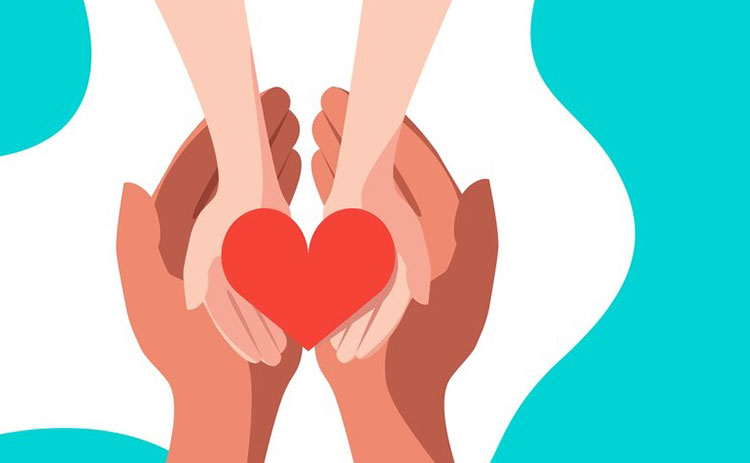
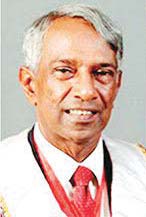 By Dr B. J. C. Perera
By Dr B. J. C. Perera
MBBS(Cey), DCH(Cey), DCH(Eng), MD(Paed), MRCP(UK), FRCP(Edin), FRCP(Lon), FRCPCH(UK), FSLCPaed, FCCP, Hony FRCPCH(UK), Hony. FCGP(SL)
Specialist Consultant Paediatrician and Honorary Senior Fellow, Postgraduate Institute of Medicine, University of Colombo, Sri Lanka.
People of Sri Lanka talking about philanthropy might come as a total surprise to most of you. With all our economic problems, bankruptcy, rampant corruption, appalling governance, unprecedented brain-drain, and a whole host of other floating perennial problems in our Motherland, one might justifiably say that those who talk of philanthropy and charity at present need to have their heads examined. With the Sri Lankans having an extremely difficult time making ends meet, one would be more than inclined to proclaim that compassionate generosity would perhaps be the last thing on their minds. However, there are shining exceptions to the rule. One hopes that this article will induce a paradigm shift in the perceptions of the general public, in the form of a complete U-turn on the topic under discussion.
Now, I would like to take the readers back to 1996, when I was inducted as the Founder President of The Sri Lanka College of Paediatricians. It was an entirely new academic enterprise, designed to be the scholastic continuum of The Sri Lanka Paediatric Association. At that time, in addition to many other medical problems in children, there was a significantly high death rate of newborn babies as well as quite a number of them being left with permanent brain damage. The basic cause was the failure on the part of the babies to establish normal breathing, thereby depriving the brain of the all-important oxygen for their very survival and normal functioning.
To most of us, the answer to this dilemma was obvious. This was an eminently manageable clinical problem. These babies who had such problems initiating normal breathing needed to be assisted to commence normal respiration and they would recover completely. Towards that end, all staff members in Labour Rooms and Operating Theatres, including doctors, nurses, and midwives, right around the country, had to be trained on newborn resuscitation techniques to save lives of the newborns and to prevent permanent brain damage in those who survived. The said techniques using a specialised bag and mask bit of equipment, could be easily taught to all these healthcare workers. However, there was a huge snag. They had to practice the technique on training mannikins which had electronic feedback systems to confirm that the technique was being correctly applied. The problem was that the set of mannikins would cost around Sri Lankan Rupees 500,000/- at that time. That was a very large amount of money; quite a fortune, to say the least!
The college being in its infancy did not have access to such a large amount of money. Then, in desperation, I wrote a letter to the newspapers explaining the problem fully and asking for public donations towards this endeavour. It was published in all the English newspapers. I was prepared to even go around with a begging bowl. However, to be quite honest, I did not think that my efforts would be successful.
Hey presto!! within just about two weeks we had more money than we bargained for. Some of our people gave small amounts, some gave large amounts, but small or large it all added up to what we needed. In my letter in the newspapers, I promised them that not even a red cent would go into a pocket and I pledged my sworn assurance on that score. The general public trusted us implicitly, and that was the critical hub of that magnificent response. Money just poured in.
Within another couple of weeks, we had all the equipment that we needed. My consultant colleagues from the Western Province joined me, together with the Consultant Paediatricians in the peripheries of the country, and we went around training scores of healthcare workers in newborn resuscitation. The trainers’ services were most willingly provided by our colleagues on a purely voluntary basis; we did not pay them even a nickel. The ultimate objective was to have a trained healthcare workforce in the Labour Rooms and Operating Theatres to deal promptly and effectively with newborn babies who had problems with initiating normal breathing. Within a few months, we had such a workforce.
The rest is history. In quite a short time, the newborn deaths came down drastically and the number of children left with permanent brain damage too was very significantly reduced, right around the country. All we did was write a compelling letter pulling at the heartstrings of our people. Their response was absolutely wonderful. Later on, I wrote another letter to the newspapers providing details of the success story and thanking our people for what they had financed. We took no credit at all and all praise went to the people who responded ever so magnificently to our desperate call. It was a sterling achievement by those who contributed money, as much as it was a triumph for the healthcare workers. I was only just the catalyst for it.
Now fast forward to the current era. Many are the initiatives that have been successfully funded by public donations and implemented by our colleagues; those of my vintage as well as the younger ones. Resourceful colleagues of ours have done wonders for many hospitals, especially in very remote areas. They are far too numerous to document here and have ranged from infrastructure facilities to securing essential medicines. Many have used their very own family funds for the purpose as well. Even our Sri Lanka College of Paediatricians, now grown well into adulthood, arranged for, and secured essential medicines for needy children in 2022 and 2023. In addition, the college has been involved with the magnificent Little Hearts Project of the Lady Ridgeway Hospital for Children. Many people from here and abroad responded to these clarion calls by the College.
However, this author feels that he would be failing in his duties, if he does not cite just one more example of how much can be done by a dedicated team of humanitarians working together in a remote area of the island. There is a novel public and private partnership project in the capacity development of hospitals in the Uva Region. That story illustrates how a philanthropic group working closely with donors, health authorities and professionals, tries hard to develop health sector capacity in hospitals in the Uva Province. This project has clearly shown that the public and private sectors can work together for the benefit of people in an effective, transparent, and efficient way.
The endeavour began three years ago during the COVID-19 pandemic when a public-private partnership was mooted to mobilise their resources to provide equipment to serve the critically ill patients suffering from COVID-19. This project proved to be very successful due to collaboration between a philanthropic promotor group, donors, and health authorities in Uva as well as the Sri Lanka College of Internal Medicine. It started with a retired Professor of Psychiatry residing in Diyatalawa being informed of the problems facing the new COVID-19 unit at Bandarawela Hospital by a doctor working there. It coincided with a Sri Lankan doctor living in California, USA, expressing his interest in mobilising resources to develop the capacity of hospitals to deal with the COVID-19 pandemic. This project was then initiated to provide equipment to increase the capacity of Bandarawela Hospital. It was promoted by a philanthropist group led by the Californian doctor and a retired Sri Lankan cricketer cum diplomat, while the Psychiatrist along with the hospital authorities and the College of Internal Medicine focused on implementing the technical aspects of the project. All went quite well and according to plan. It is noteworthy that in a documented response, the Physician looking after the COVID-19 patients at Bandarawela Hospital had intimated “Thanks to your donations the hospital was able to treat and discharge over 1,500 covid positive patients”. The donors could not have asked for more.
Encouraged by the outcome, the philanthropists expanded their efforts. It entailed the provision of equipment worth Rupees 26 million and the hospitals which benefitted included not only the Bandarawela Hospital but the other hospitals of the region, in Diyatalawa, Welimada, Haputale, Haldumulla, and Koslanda as well. The project was a great success in upgrading the facilities for critical care, benefitting a large number of patients suffering from major health problems, including COVID-19.
Following the COVID-19-related capacity-building activities, while monitoring and reviewing the outcomes of the project, it became clear that there was a real need to increase the capacity of other critical areas of health. The Californian doctor and the retired cricketer had then indicated their willingness to mobilise additional resources to improve health services. It resulted in the improvement and expansion of services provided by the Diyatalawa Hospital to meet the emerging needs of people with emergencies and accidents living in the catchment area. A project committee was formulated to raise the necessary funds and plans were set afoot to upgrade the present one-bed Accident and Emergency facility at the Diyatalawa Hospital to a modern well well-equipped five-bed unit. Plans are afoot and funds have already been mobilized to develop an easily accessible new premises with an initial donation of Rupees 10 million from two retired Doctors of Philosophy. The latter two had provided generous donations for the earlier project too. All needed equipment has already been identified and other potential donors earmarked and contacted. The Health Services Council led by a venerable Buddhist Thera and another philanthropist from California are working with the Diyatalawa Hospital team in this endeavour.
I have purposely avoided providing the names of these pioneer humanitarians simply because I know for sure that it is the last thing they would want. They will be embarrassed if their names are highlighted. All this goes to confirm the veracity of my original contention that philanthropy is very much alive and that many hearts would melt and respond appropriately to provide the much-needed services for our people. Very many of them have done so without any fanfare at all. All they need is immense trust in the people who organise and manage such initiatives.
Philanthropy in medicine embodies the very epitome of compassion and generosity, illuminating the profound beauty of humanity’s altruistic potential. It transcends mere financial contributions, manifesting as a lifeline for those in dire need. From funding groundbreaking research to providing access to essential healthcare services, philanthropy breathes life into the noble pursuit of healing. It ignites hope in the hearts of patients, offering solace in moments of vulnerability and despair. Moreover, philanthropy fosters collaboration among healthcare professionals, and communities, catalysing innovative solutions to some challenges in providing optimal healthcare. It empowers individuals and institutions to complement each other towards providing holistic care, ultimately saving countless lives and alleviating suffering.
In its essence, charity in efforts taken to improve healthcare truly portrays the profound interconnectedness of humanity, reminding us of our shared responsibility to uplift and support one another. It is a testament to the inherent goodness within people, leaving an indelible mark of compassion and kindness on the fabric of society. These deeds are the ones that reawaken our admiration for the intrinsic compassionate qualities of the people of our Motherland. They are indeed the Jewels in the Crown.
Features
India is holding a mammoth election with nearly a billion voters

On 19 April, Indians will begin choosing a new parliament for the next five years, as Prime Minister Narendra Modi seeks a third consecutive term. Opinion polls put his Bharatiya Janata Party (BJP) and its allies ahead. They are up against the Indian National Developmental Inclusive Alliance (India), which groups more than two dozen opposition parties including Congress, which was dominant for decades until the BJP took office in 2014.
Scroll down to find out all about the staggering scale of the exercise, the powerful personalities and issues on which the election will be fought:
The election to the lower house (Lok Sabha) is taking place in a bitter atmosphere. The opposition say they have been denied a level playing field, with many leaders raided by federal law enforcement agencies. Congress said tax authorities had frozen its bank accounts for six weeks, hampering its campaign finances. Some opposition leaders, including popular Delhi Chief Minister Arvind Kejriwal, have been jailed on corruption charges they deny.
The opposition has appealed to India’s electoral authorities to intervene but the Election Commission itself has faced questions over its independence. The commission has refused to comment.
Some 969 million citizens are eligible to cast their ballot. To give you an idea, if you add together the populations of the US, Russia, Japan, Britain, Brazil and France – that comes close to how many Indians are on the electoral rolls. Since we are still a bit short, let’s also throw in Belgium.
Nearly 1.5 million polling booths have been set up across the country, with Chief Election Commissioner Rajiv Kumar vowing to “take democracy to every corner of India”.
“Our teams will walk the extra mile to reach every voter, whether they are in jungles or on snowy mountains. We will go on horseback, elephants, mules or helicopters. We will reach everywhere.”Rajiv Kumar, Chief Election Commissioner
While most polling booths are in schools, colleges and community centres, unusual locations are sometimes chosen – like shipping containers, mountain tops or forests. Polling booths are set up even in the remotest corners of the country
And when the commission says “every voter counts”, it’s not just a slogan. In the 2019 general election, five officials traveled by bus and on foot for two days so that a lone voter – a 39-year-old woman in the north-eastern state of Arunachal Pradesh – could exercise her franchise.
The most politically crucial state is Uttar Pradesh (UP). With more than 240 million people, it’s India’s most populous state and sends more MPs to parliament than any other. Analysts say “the way to Delhi is through UP” and a party that does well here is usually well-placed to rule India – eight of India’s prime ministers trace their roots to the state.
The BJP won 71 of UP’s 80 seats in 2014, a figure that dipped to 62 in 2019. Mr Modi, who is from Gujarat, chose UP to make his debut as an MP in 2014. He held his seat in the ancient city of Varanasi in 2019 and aims to do so again this year.
At the other end of the spectrum are three states in the north-east – Sikkim, Nagaland and Mizoram – and the federally-administered regions of Andamans, Lakshadweep and Ladakh, which elect one MP each.
Most of India – 22 states and federally-administered regions – need only one day for voting but some parts take longer. Uttar Pradesh, West Bengal and Bihar will vote in all seven phases.
The elections will decide the fate of thousands of candidates from six recognised national parties – including the BJP, the Congress, Delhi’s governing Aam Aadmi Party and the Communist Party of India (Marxist) – as well as 58 recognised state-level parties. Candidates from many smaller parties will also be in the fray.
All eyes, however, will be on the heavyweights:
Narendra Modi
Prime Minister Modi, who is eyeing a historic third term, remains the frontrunner, with early opinion polls predicting his return. If the 73-year-old wins, he will equal the record of Jawaharlal Nehru, India’s first premier.
A polarising figure, Mr Modi remains a mass leader with millions of supporters who credit him with good governance and improving India’s standing internationally. But critics say his brand of muscular Hindu nationalism excludes minorities and he is out to change the secular fabric of the country.
Mr Modi’s use of religion and religious symbolism has proved potent in a country where 80% of the population is Hindu.
His catch-phrase for the 2024 election is “abki baar, char sau paar [this time we’ll cross 400 seats]”, a target the BJP has set for itself and its allies. A party needs 272 seats to win in India’s first-past-the-post system – in 2019, the BJP won 303.
Amit Shah
The man powering Mr Modi’s election juggernaut is Home Minister Amit Shah. He’s charted numerous successful election campaigns for the BJP.
Like his mentor, he’s a polarising figure. Supporters say he defends the Hindu faith. He is seen as the driving force behind controversial laws, from scrapping Kashmir’s partial autonomy to citizenship legislation that critics call anti-Muslim.
Yogi Adityanath
Mr Adityanath, the shaven-headed, saffron-robed Hindu monk-turned-chief minister of Uttar Pradesh, is considered the biggest mass leader in the BJP after PM Modi. He’s not standing in the general election but is playing a major role in the campaign in the bellwether state.
He’s a holy man to his many followers but critics call him a divisive politician who has used public rallies to whip up anti-Muslim hysteria. During his seven years in office, lynchings and hate speech against Muslims have often made headlines.
Rahul Gandhi
Mr Gandhi, who has never won a national election or been a minister, is the most prominent opposition leader. Most of this is down to his lineage: his great-grandfather Jawaharlal Nehru was independent India’s first PM and his grandmother and father both later served as prime ministers.
But as the BJP has risen over the past decade, Congress has shrunk. Some of the blame has been laid at the door of Mr Gandhi, who critics called “the reluctant prince” in his early years in politics.
Mr Gandhi has undertaken two long marches across India since 2022 He’s worked hard to counter that impression, including taking two long treks across the country aimed at “uniting Indians against hatred and fear”. Nonetheless, opinion polls put Congress well behind the BJP.
Sonia Gandhi
When Congress was last in office a decade ago, Mr Gandhi’s Italian-born mother Sonia was considered the most powerful woman in India. But the 77-year-old has been in poor health and has lost much of her political influence.
She maintains a hold over the party as chairperson. In January, Mrs Gandhi moved to the upper house so she is not contesting the Lok Sabha election.
Priyanka Gandhi
One name that does the rounds before every election is that of Priyanka, Rahul Gandhi’s charismatic sister – although she has never run for parliament.
Resembling her grandmother – former PM Indira Gandhi – she has campaigned extensively for Congress, winning praise for connecting with people. This time, too, supporters are clamouring for her to stand for election. Priyanka Gandhi has a marked resemblance to her grandmother, former PM Indira Gandhi
Arvind Kejriwal
One opposition figure looming over the election is Arvind Kejriwal, Delhi’s firebrand chief minister who is currently in jail.
He made his name as an anti-corruption crusader whose relatively young Aam Aadmi Party (AAP) beat both the BJP and Congress three times in a row to control the capital. It’s also in power in Punjab.
But in March he joined several of his senior party leaders when he was arrested. He’s denied corruption charges and accuses the government of being vindictive. Supporters fear his arrest will dent the AAP’s election campaign.
What will decide how Indians vote?
Will a grand new Hindu temple prove Mr Modi’s trump card? Will the economy, job prospects or welfare schemes be uppermost in voters’ minds? Or will they vote on the basis of caste or religion?
Ram temple
The temple to Hindu God Ram in the northern city of Ayodhya is expected to provide a divine push to Mr Modi’s election pitch by appealing to the majority Hindu community.
The temple – which replaced a 16th Century mosque torn down by Hindu mobs in 1992, sparking riots in which nearly 2,000 people died, was inaugurated with much fanfare by the PM in January.
The event was broadcast live on TV; schools, colleges and most offices were given a day off and people were encouraged to watch the ceremony.
Economy
Could PM Modi’s vow to make India “a developed nation by 2047”, its independence centenary, chime with voters?
India – with its GDP at $3.7tn (£3bn) – is the world’s fastest growing major economy. Last year, it beat the UK to become the fifth largest in the world and is on course to reach $7tn by 2027, which would see it leapfrog Japan and Germany into third spot after the US and China.
But the spoils of India’s boom are concentrated in few hands and inequality remains high. India ranks 140th in terms of global per-capita income and more than 34 million of its citizens live on less than $2.15 a day, even though government data shows “extreme poverty” has reduced a lot.
Jobs
Many voters will be thinking of jobs. Seven to eight million young Indians enter the labour market annually, but millions are unable to find work.
Recent government data shows falling unemployment and a steady increase in labour force participation – to 57.9% in 2022-23 from 49.8% five years earlier. But experts point out most new jobs are low-paying and poor quality – for example in agriculture or women doing unpaid family work.
A telling indication of distress is that millions more are now signing up for the $3-a-day government rural job scheme. Thousands are even ready to migrate to war zones for work.
Electoral bonds
They were meant to clean up murky political financing, but electoral bonds were recently banned by India’s top court, which ruled them “unconstitutional”. The court also ordered the government-run State Bank of India (SBI) to provide details of who bought them and how much parties received.
The fact that the BJP was the biggest beneficiary – securing almost half of bonds worth 120bn rupees ($1.4bn; £1.1bn) donated between 2018 and 2024 – isn’t looking good on Mr Modi’s report card.
Reports have linked many donations to companies being investigated by government anti-crime agencies. Calling it the “biggest scam in Indian history”, opposition parties allege the agencies were used for “extortion”, which ministers have denied.
Welfare
The scale of India’s welfare state is staggering: the Modi government claims it has spent hundreds of billions of dollars to help poor households, reaching more than 900 million people. A number of state leaders have also invested heavily in welfare schemes.
But does that free sack of rice or money to build toilets prompt people to vote for a party? Analysts say such schemes can help, but that they are unlikely to be the only driving factor.
Divisive politics
India has long had religious divisions but critics say fault lines have deepened in the decade since the BJP won power. They say India is becoming a Hindu state where its secular status is increasingly being challenged and its 200 million Muslims – the country’s biggest minority, accounting for some 14% of the population – are marginalised. The government rejects this, saying it is inclusive.
In the last Lok Sabha, the BJP did not have a single Muslim MP. Rights groups and activists also point to increasing violence against Muslims, especially in states governed by the BJP. The government denies accusations it has a divisive agenda and its supporters appear largely unconcerned by such criticisms.
The democracy question
The election comes amid accusations from the opposition, activists and global rights organisations that Indian democracy is under threat. Rahul Gandhi has accused the government of targeting opposition leaders, spying upon them and imposing constraints on parliament, the judiciary and the free press.
Organisations like Human Rights Watch say the Indian authorities have used politically motivated criminal charges, including terrorism, to jail many critics and foreign funding rules to harass the opposition, rights groups and the press – charges the government denies.
(BBC)
Features
From broad principles to problem solving on the ground

Given the importance of the IMF programme to the revival of the Sri Lankan economy, it is incumbent upon the major opposition parties, both of which are front runners to form the next government, to make their stances clear on their economic policies. The JVP in particular needs to make its stance clear as it has a Marxist background that rejected international markets-oriented development in the past. Their economic thinking has traditionally been suspicious of exploitation by international powers with a preference for self-reliant economic development in which the state is the engine of development. However, for that very reason and its image of a radical alternative, the JVP has emerged as the dark horse of national politics in the aftermath of the Aragalaya mass protests that demanded “systems change” in the context of the country’s sudden economic collapse.
by Jehan Perera
The New Year celebrations this year were low key compared to the past. The loud sound of crackers and other fireworks, traditionally accompanying the dawn of the New Year, was less than in the past. The economic burden on the people has begun to tell and was evident in the reduced purchase of new clothes and other items in preparation for the New Year. It can be surmised that the general population has less savings to utilise due to those savings being consumed in earlier months when people’s expenditures exceeded their income. The latest World Bank publication titled ‘World Bank Update: Bridges to Recovery’ released on April 2 shows that poverty has increased over the past four years—from 11 percent in 2019 to almost 26 percent in 2024 in Sri Lanka. According to it, approximately 60 percent of Sri Lankan households have decreased incomes, with many facing increased food insecurity, malnutrition and stunted growth.
In contrast to these ground realities that have eroded the optimism of people to spend on festivities and non-essentials, the run-up to the New Year was accompanied by positive statements of recovery from the international financial institutions supporting the country. According to the Asian Development Bank, Sri Lanka is showing signs of recovery, with green shoots emerging in the second half of 2023 while inflation has decelerated to single digits, foreign exchange reserves continue to be built up, and the exchange rate has appreciated. Furthermore, tourist arrivals and remittance inflows continue to show a commendable recovery while supply conditions have improved. ADB’s growth forecast hinges on the continuation of reforms and better consumer and business sentiment. Timely completion of external debt restructuring will also support Sri Lanka’s debt sustainability efforts.
The gist of the recent statements by the IMF, World Bank and ADB is that the government is taking the IMF programme that they support forward and the country needs to continue on that path. They have pointed out that the macro-economic figures on inflation and budget deficits have been reduced. However, there are also cautionary elements in their communications. One is that the government needs to pay more attention to addressing the needs of those sections of the population who are finding it difficult to make ends meet. The ADB, for instance, has noted that government needs to address the impact on the poor and vulnerable and also continues to implement reforms to address the underlying causes of the crisis.
POLICY CLARITY
The second element in the communications of these major supporters of Sri Lanka’s economic recovery is to point out the dangers of the election cycle disturbing the smooth implementation of the economic reform process. They have expressed concern that the upcoming elections in Sri Lanka could jeopardize the country’s economic recovery programme supported by the IMF. The uncertainty surrounding the elections is causing a potential downward trend in Sri Lanka’s economic outlook. This could lead to a slowdown in the IMF programme and hinder the country’s progress towards economic stability. They also warn that due to the elections, the IMF programme may be extended into the second half of 2024 which can have political consequences.
President Ranil Wickremesinghe’s statement that elections would not be held until the IMF programme is completed has generated concern about whether the presidential elections scheduled to be held in October will be endangered. The international agencies whose main backers are the Western democracies and Japan are unlikely to be advocating that elections should not be held merely to safeguard the IMF programme. Their concern is more likely to be that the government will loosen its current efforts to limit unnecessary expenditures and engage in populist measures such as reducing taxes and increasing subsidies as a means of getting votes. Sri Lanka’s past track record of failing to fully implement its previous 16 IMF agreements is a warning that the government may not follow through on its commitments. The concern would be exacerbated by the fact that both the major opposition parties, the SJB and JVP have said they will renegotiate the IMF programme if they come to power.
Given the importance of the IMF programme to the revival of the Sri Lankan economy, it is incumbent upon the major opposition parties, both of which are front runners to form the next government, to make their stances clear on their economic policies. The JVP in particular needs to make its stance clear as it has a Marxist background that rejected international markets-oriented development in the past. Their economic thinking has traditionally been suspicious of exploitation by international powers with a preference for self-reliant economic development in which the state is the engine of development. However, for that very reason and its image of a radical alternative, the JVP has emerged as the dark horse of national politics in the aftermath of the Aragalaya mass protests that demanded “systems change” in the context of the country’s sudden economic collapse.
SYSTEMS CHANGE
At the present time in keeping with the general consensus among economists and the intelligentsia, the JVP appears to be recognising the importance of the international financial agencies in Sri Lanka’s economic recovery. They have said they will renegotiate the IMF programme, not abandon it. Fiscal targets will need to be met and there needs to be a balance between expenditures and incomes. At the same time there can be a redistribution of the burdens of emerging from bankruptcy that have been put on those who are at the bottom levels of society rather than those at the higher levels. This is evident in the host of newspaper advertisements announcing the forced sale of properties being mortgaged by small and medium businesspersons. The government has chosen not to protect them, giving priority to saving the businesses that are “too big to be allowed to fail.”
The “systems change” demanded by the masses of people is not only economic justice on the lines pointed above but also includes the issue of inter-ethnic justice that is of particular importance to the ethnic and religious minorities. President Ranil Wickremesinghe has been clearest in his analysis of the problem and solution though he has failed to deliver on the solution in his two years as president and earlier years as prime minister. Drawing on his personal experiences, Opposition leader Sajith Premadasa made a remarkable speech recently to a professionals group in which he identified the ethnic, religious, caste and social class cleavages in society. Similarly, JVP leader Anura Kumara Dissanayake has been making speeches in which he provides a comprehensive analysis of the use of narrow ethnic nationalism to win elections, starting from the disenfranchisement of Tamils of recent Indian origin (Malaiyaha Tamils) in 1948.
In his New Year message, the JVP leader broke new ground for a mainstream political party when he referred to ethnic and religious minorities as “nationalities.” The communities in Sri Lanka are not only cultural, religious and linguistic groups, but are also political entities. They all wish to protect their identities and to be treated equally by the Sri Lankan state without discrimination. In describing them as nationalities, the JVP leader was utilising the Marxist political tradition, in which regional self-government is not a negative but a positive. However, the JVP needs to be more specific about what they will actually put in place on the ground to resolve the issue of power sharing between the communities. They also need to deal with their opposing positions and actions in the past. This is no different from the question of what they will do in terms of the economy and with the IMF agreement. These are the nettles that have to be grasped by those who aspire to lead Sri Lanka and bring about the systems change for economic development and national unity. Answers need to be given to convince those in positions of power in business and politics and to those at the bottom who are struggling to make ends meet.
-

 Latest News7 days ago
Latest News7 days agoApril 15 (Monday) declared a public holiday
-

 Sports7 days ago
Sports7 days agoOnly if Buultjens knew that teams have pulled out of rugby sevens!
-

 Business7 days ago
Business7 days agoMallika Hemachndra Jewellers offer a glittering new year with gold and smiles
-

 Business7 days ago
Business7 days agoHNB and Ideal Motors partner up once again to offer exclusive perks on Mahindra automobiles, Powerol generators
-

 News4 days ago
News4 days agoSinhala and Tamil New Year auspicious times
-

 News7 days ago
News7 days agoWigneswaran considers himself best Tamil candidate to run for President
-

 Business6 days ago
Business6 days agoVietnamese billionaire Truong My Lan sentenced to death for $44bn fraud
-

 Business7 days ago
Business7 days ago‘NSB continued to prove its resiliency within economic shudder’

